A higher orbit of connectivity
-
- from Shaastra :: vol 04 issue 01 :: Feb 2025
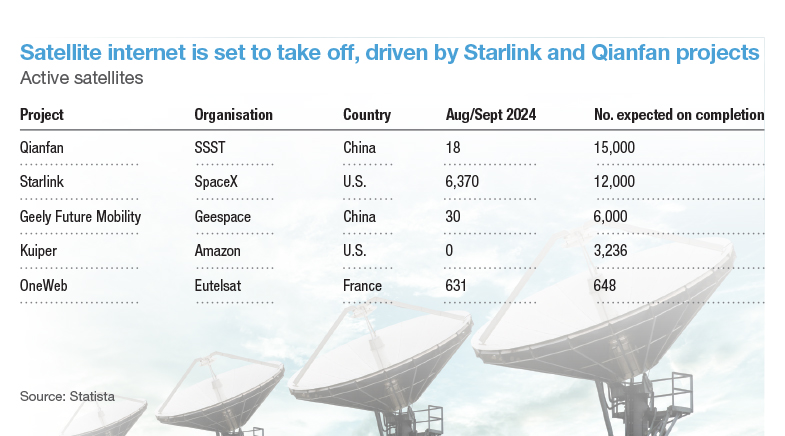
Tech advances, falling satellite-launch costs, and the demand for internet connectivity in remote regions are driving a satellite internet revolution.
howindialives.com
howindialives.com is a database and search engine for public data
The race for global satellite internet dominance is intensifying. Currently, Starlink leads, with about 6,370 active satellites in orbit. It plans to expand that network to 12,000. China's state-owned Shanghai Spacecom Satellite Technology (SSST) aims to surpass this, and has plans for a 15,000-satellite constellation under its Qianfan project. Meanwhile, Amazon's Project Kuiper plans to deploy over 3,000 satellites, while Eutelsat OneWeb is operating 631 satellites. This race is fuelled by technological advances, a fall in launch costs, and a growing demand for connectivity in remote regions.
COVERAGE GAPS
From only a few thousand users in 1995, the internet has grown to serve 5.52 billion people in 2024. This growth was driven by massive infrastructure investments in mobile networks and broadband technology, the proliferation of affordable smartphones — particularly in developing nations — and the digital transformation of businesses through e-commerce and cloud computing. These factors have contributed to making the internet a vital economic force, exceeding both the energy and the agriculture sectors in terms of GDP impact.
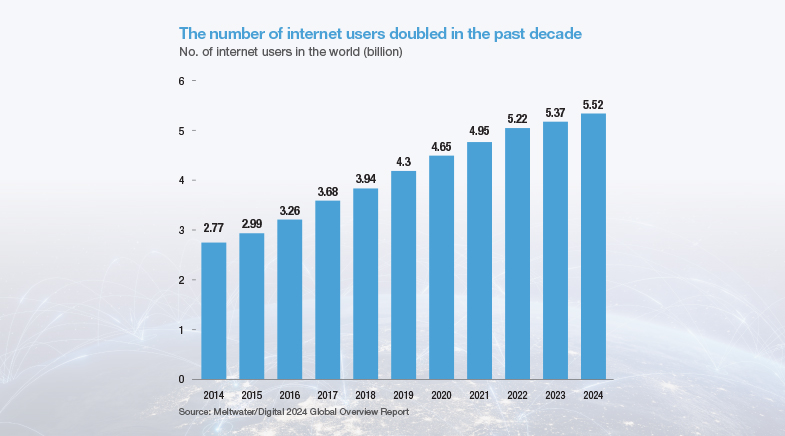
However, a significant number of people still lack internet access. A combination of factors, including insufficient infrastructure, high connectivity costs, limited access to devices, geographical barriers in remote areas and socio-economic constraints, has kept 2.65 billion people offline globally. The lack of access is more acute in certain regions. Only 26.8% of the population in Central Africa has internet access. In absolute terms, over 956 million people in South Asia remain disconnected.
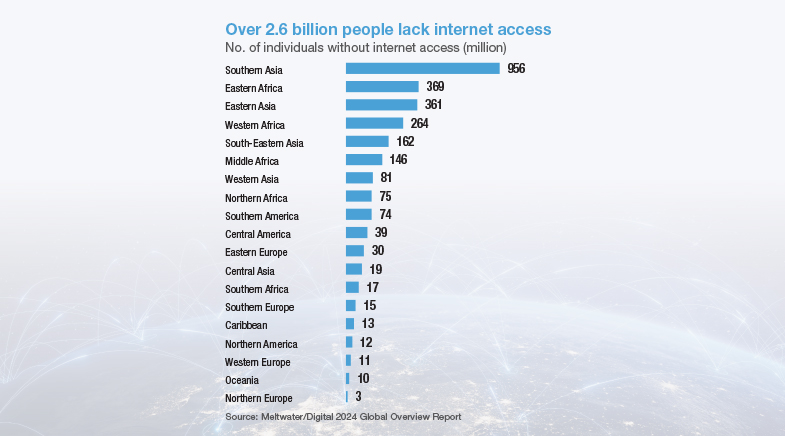
TACKLING COSTS
Satellite internet technology offers a promising solution, particularly in remote and underserved areas where traditional terrestrial infrastructure like fiber optic cables is limited or unavailable. Satellite internet can cover vast geographical areas with minimal ground infrastructure. Satellites in orbit beam internet signals to receivers on the ground, overcoming geographical limitations such as mountains or bodies of water. Additionally, satellite networks are more resilient than terrestrial systems, being less vulnerable to disruptions from natural disasters or other emergencies, as they rely on space-based equipment rather than ground-based cables and towers.
However, there are limitations. Satellite internet signals must travel to and from space, resulting in higher latency (delay) compared to terrestrial networks, especially those using fiber optics. Currently, satellite internet is also more expensive than traditional broadband options, although efforts are under way to reduce costs.
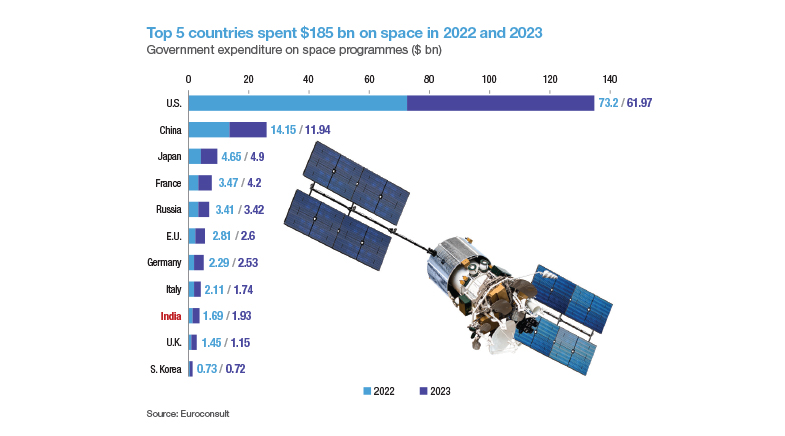
Costs are expected to decline due to two factors. First, economies of scale, as seen with terrestrial networks. Second, advances in technology driven by public and private sector investments in the space industry. The top five countries in space spending invested a combined total of about $185 billion in 2022 and 2023 on space programmes. This does not include India, which runs a more frugal space programme but has achieved significant impact. Similarly, venture capitalists have invested over $40 billion in space tech start-ups globally since 2019. These investments have led to both scale and innovation, which, in turn, have lowered costs. Launch costs, for instance, have dropped by a factor of 20-36 since the 1980s, with projections indicating a further 95% reduction by 2040, driven by reusable technology and improved manufacturing processes.
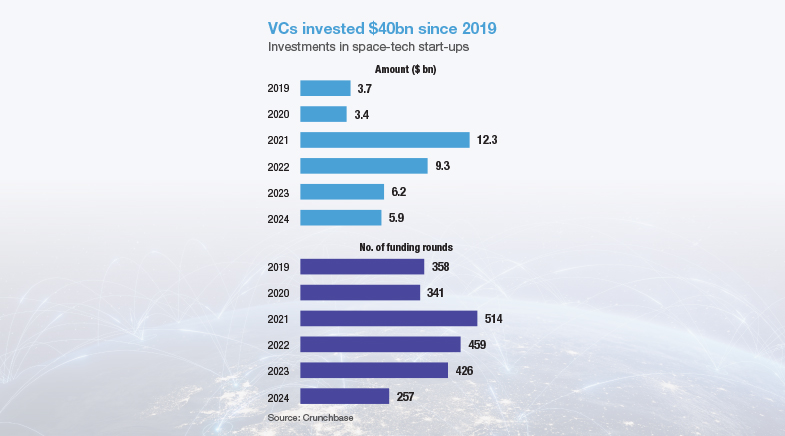
THE IP WARS
The decline in costs has coincided with an expansion of knowledge. The number of patent families, or inventions, related to space technologies has risen significantly over the past few decades. Patent filings have increased in three main areas of space technology: electrical power (influenced by advances in automotive batteries), system control for spacecraft navigation, and propulsion systems, according to a report by the European Patent Office. The U.S. has historically dominated patent filings in space technology, as reflected in the share of global patents as of 2020. However, China has emerged as a major contender, surpassing the U.S. in annual patent filings in recent years, driven primarily by government policies incentivising domestic innovation and patent protection.
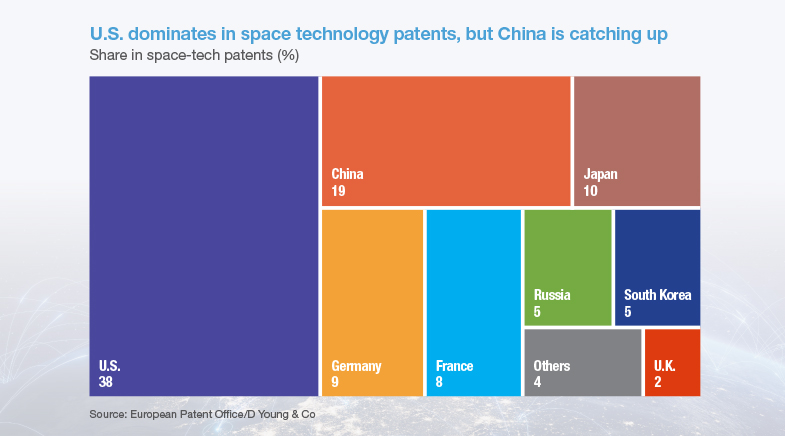
PAYLOADS VS DEBRIS
As a result of these advancements, there are now over 13,000 active payloads orbiting Earth, 85% of them in low Earth orbit (LEO), which is the preferred regime for satellite internet. Meanwhile, concerns about space debris and the potential for collisions are growing, with the increasing number of satellites being launched, especially into LEO. This has raised questions about the long-term sustainability of space flight unless debris mitigation measures are significantly improved.
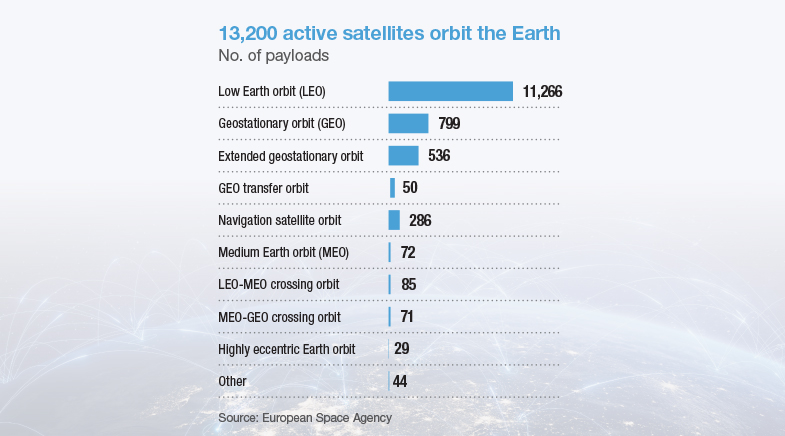
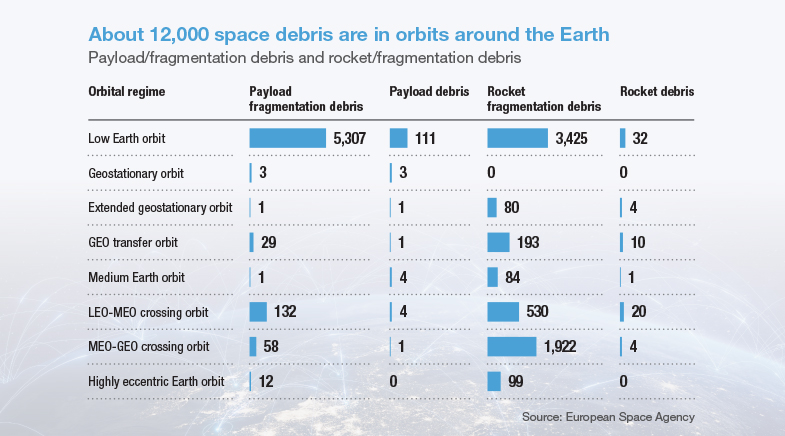
OPPORTUNITIES AHEAD
In the coming years, the industry will need to address these concerns, as the benefits of satellite internet are expected to be significant and far-reaching. The satellite internet market itself is projected to exceed $37 billion in the next 10 years. However, its broader impact is expected to be much greater.
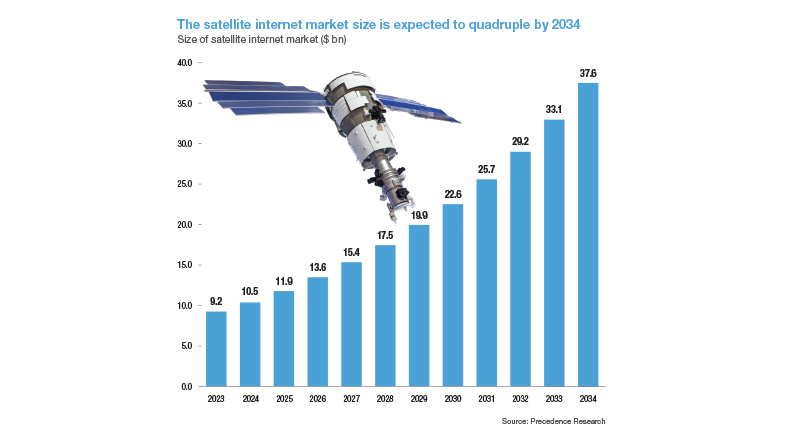
Satellite internet relies on constellations of satellites in LEO to provide broadband internet access. Since LEO satellites orbit closer to Earth, they offer lower latency and faster speeds compared to traditional geostationary satellites. This opens up opportunities in education, healthcare, and economic development in underserved regions. It also enhances communication, navigation, and entertainment options on ships, planes, and other platforms beyond the reach of traditional telecommunications. Moreover, satellite internet plays a vital role in expanding the reach of the Internet of Things, connecting devices and sensors in remote locations to enable environmental monitoring, remote infrastructure management, and precision agriculture, thereby contributing to improved efficiency and sustainability.
Have a
story idea?
Tell us.
Do you have a recent research paper or an idea for a science/technology-themed article that you'd like to tell us about?
GET IN TOUCH














